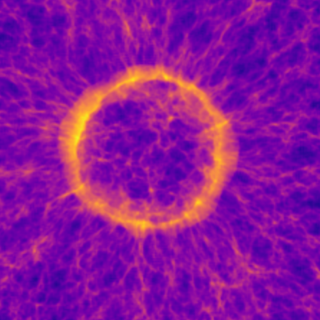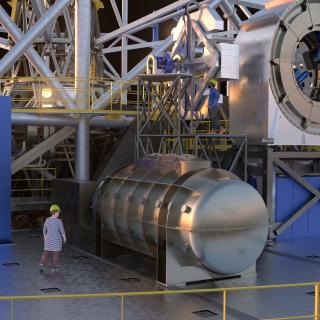Left panel: spatial distribution of the auroral [N II] λ5755 emission line in the PN M 1-42 prior to applying the recombination contribution. Middle panel: spatial distribution of the N II λ5679 recombination line. Right panel: same as left panel after applying the recombination contribution correction.
We present a detailed study of the gas chemical abundances in planetary nebulae (PNe), the final fate of solar-like stars, through high spatial resolution Integral Field Unit spectroscopy (IFU) obtained with the Multi Unit Spectroscopic Explorer (MUSE) attached to the 8.2-m Very Large Telescope (VLT) in Chile. We focused on three PNe with high abundance discrepancy factors (ADF > 20), which is a well-known and major unresolved problem in nebular astrophysics: chemical abundances obtained from faint optical recombination lines (ORL) yield systematically larger values than those obtained from the bright collisionally excited lines. The study has shown that the effects of recombination contribution on some collisionally excited lines sensitive to electron temperature, which are crucial to accurately determine chemical abundances, are extremely large in these objects and should be carefully considered to properly compute the chemical abundances. Additionally, spatially resolved ADF maps have been constructed for the first time simultaneously for the two main oxygen ionic species, confirming that ORL emission strongly increases towards the inner regions of these PNe. This almost spatially coincides with a downward gradient of the electron temperature obtained from recombination line diagnostics, which strongly supports the presence of two distinct gas phases. In this work it is also shown that estimating the relative contribution of each gas component to the H i emission is crucial to compute reliable abundances and, therefore, a new method to evaluate such relative contribution is proposed.
![MUSE view of PN M 1-42 Left panel: spatial distribution of the auroral [N II] λ5755 emission line in the PN M 1-42 prior to applying the recombination contribution. Middle panel: spatial distribution of the N II λ5679 recombination line. Right panel: same as left panel after applying the recombination contribution correction.](/sites/default/files/styles/crop_rectangle_21x9_to_1280/public/images/media/image/figura.jpg?h=1882a86a&itok=xpzmvcMi)



